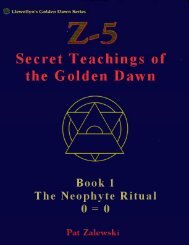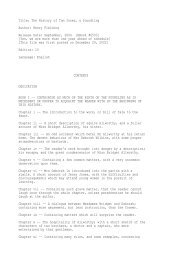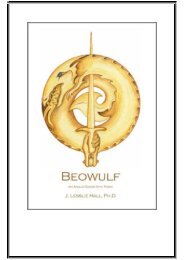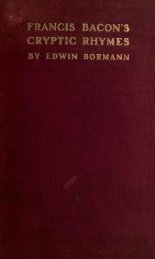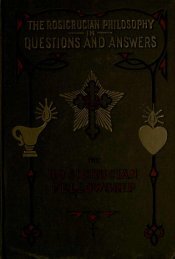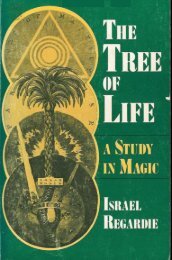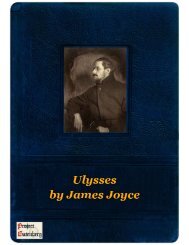Click to download PDF version: 3.87MB - Global Grey
Click to download PDF version: 3.87MB - Global Grey
Click to download PDF version: 3.87MB - Global Grey
You also want an ePaper? Increase the reach of your titles
YUMPU automatically turns print PDFs into web optimized ePapers that Google loves.
124 At the Back of the Black Man's Mind By R. E. Dennett<br />
This class is called XINA XISALU.<br />
6th Class. Each XIBILA has its XINA.<br />
BUNZI hates unmarried women; XIKUMBI, the maiden, is therefore its XINA.<br />
XIKANGA NXILUKA hate a noise; the goat NKOMBO is their XINA.<br />
This class is called XINA XINKICICL<br />
7th Class. When natives are sick and are undergoing treatment certain foods are XINA,<br />
and as often as not the patient is ordered henceforth not <strong>to</strong> allow a companion <strong>to</strong> eat<br />
certain flesh <strong>to</strong>gether with him.<br />
This is called XINA XI BILONGO.<br />
8th Class. Certain household fetishes, bracelets, etc., carry with their ownership certain<br />
restrictions as <strong>to</strong> food. The wearer of the NGOFO bracelet may not eat the fish MPULI<br />
with another person; he may not kill and eat an animal on the same day.<br />
This is XINA BAKICI.<br />
9th Class. Now, parts of some animals are found in the sacred grove. This summed-up<br />
class is called XINA XI BIFUMBA.<br />
These BINA of the BAVILI are as follows:<br />
The skin of the leopard finds its way in<strong>to</strong> the XIBILA only as part of the dress of the<br />
individual. Neither the eel nor the cricket are found there, but the MPAKASA is the<br />
greatest of all the symbols entering the XIBILA of the BAVILI and so we will commence<br />
with it.<br />
The wild ox in the s<strong>to</strong>ries of the Bavili is generally found acting as the servant or<br />
ambassador of either the Leopard or some princely animal. As often as not it is<br />
sacrificed while in the discharge of some duty. Thus when NZAMBI (NGO?) sent him for<br />
the wagtail's drum he was killed by the followers of that bird.<br />
The tail of the ox called MAWSO is the sign of office of all the Kongozovo among the<br />
Bavili, thus the idea of obedience <strong>to</strong> the voice of one in authority is implied.<br />
The wild ox is always on the alert for the slightest noise, it is peculiarly sensitive <strong>to</strong><br />
sound. The horns and head of this animal are found in the XIBILA.<br />
BAFU = the saw fish, the snout of which the BADUNGU carry as their sign of office. This<br />
snout is found in the XIBILA.<br />
NKAKA = a kind of crocodile (opposed <strong>to</strong> the NGANDU or crocodile in the Kongo). This<br />
reptile is eaten by the BAKUNI or woodmen of the MAYOMBE district <strong>to</strong> the east of<br />
Malango's composite kingdom. It digs out its home underground in the banks of rivers.<br />
www.globalgrey.co.uk



